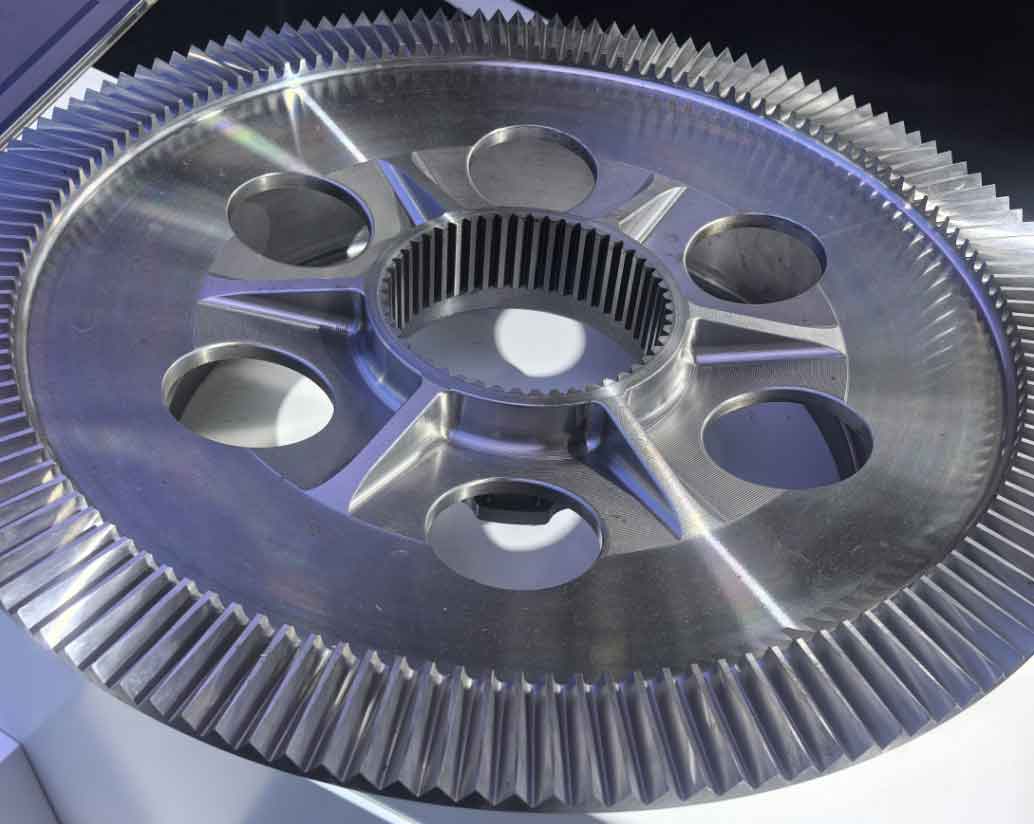Introduction
In modern mechanical engineering, the demand for high-speed gear transmission systems with superior dynamic performance and reliability has surged. Among these, miter gears (also known as herringbone gears) are widely used due to their ability to minimize axial thrust and enhance load distribution. However, excessive vibration under high-speed operation remains a critical challenge. This study proposes a robust dynamic optimization framework for high-speed miter gear transmission systems, focusing on minimizing vibration acceleration while ensuring structural reliability.

Methodology
Finite Element Modeling
A finite element model (FEM) was developed to analyze the dynamic behavior of the miter gear transmission system. The modal superposition method was employed to calculate the vibration acceleration of the gearbox housing. Key parameters of the gear pair and bearings are summarized below:
Table 1: Miter Gear Pair Parameters
| Parameter | Symbol | Value |
|---|---|---|
| Teeth (Pinion) | z1z1 | 92 |
| Teeth (Gear) | z2z2 | 46 |
| Module | mm | 7 mm |
| Pressure Angle | αα | 25° |
| Helix Angle | ββ | 23.38° |
| Density | ρρ | 7,850 kg/m³ |
| Young’s Modulus | EE | 210 GPa |
Table 2: Bearing Stiffness and Damping Coefficients
| Direction | kxxkxx (N/m) | kyykyy (N/m) | cxxcxx (N·s/m) | cyycyy (N·s/m) |
|---|---|---|---|---|
| X-axis | 585.9 | 876.3 | 1.015 | 3.259 |
| Y-axis | 696.8 | 570.9 | 1.849 | 3.241 |
6σ Robust Optimization Framework
The 6σ robust optimization method was applied to seven structural design variables of the gearbox (Table 3). The objective was to minimize the root mean square (RMS) of vibration acceleration under stochastic uncertainties. The optimization model is defined as:Minimize F(μX,σX)=1n∑i=1naiMinimize F(μX,σX)=n1i=1∑naiSubject to: Gi(μX,σX)≤0,XLSL+6σX≤μX≤XUSL−6σXSubject to: Gi(μX,σX)≤0,XLSL+6σX≤μX≤XUSL−6σX
where μXμX and σXσX denote the mean and standard deviation of design variables, and XLSL/USLXLSL/USL are the lower/upper specification limits.
Table 3: Design Variables for Robust Optimization
| Variable | Description | Initial Value (mm) | Range (mm) | Distribution |
|---|---|---|---|---|
| x1x1 | Baseplate Thickness | 14 | 9–19 | Normal |
| x2x2 | Inner Support Thickness | 24 | 19–29 | Normal |
| x3x3 | Reinforcement Thickness | 10 | 5–15 | Normal |
| x7x7 | Cover Thickness | 14 | 9–19 | Normal |
The Kriging surrogate model was used to approximate the response surface, and Latin hypercube sampling generated 50 design points for iterative refinement.
Results and Discussion
Natural Frequency Analysis
The first eight natural frequencies of the gearbox were computed to avoid resonance (Table 4). Post-optimization frequencies exhibited minor shifts but remained outside the operational range (100–4,600 Hz).
Table 4: Natural Frequencies Before and After Optimization
| Mode | Frequency (Hz) | Direction |
|---|---|---|
| 1 | 131.2 → 131.16 | Y |
| 2 | 164.9 → 164.98 | X |
| 8 | 316.3 → 316.59 | Z |
Vibration Acceleration Reduction
The RMS vibration acceleration at four evaluation points decreased by 26.1% on average after optimization. For example:
Table 5: RMS Vibration Acceleration (×10−4 mm/s2×10−4mm/s2)
| Point | Direction | Pre-Optimization | Post-Optimization | Reduction |
|---|---|---|---|---|
| 1 | X | 5,881.5 | 3,224.4 | 45.2% |
| 3 | Z | 3,885.9 | 2,901.3 | 25.3% |
The time-domain vibration curves (Figure 4) confirmed suppressed amplitudes in all axes.
Reliability Assessment
The reliability of optimized variables exceeded 97.1%, calculated using:R=Φ(Z1)−Φ(Z2),Zi=XLSL/USL−μXσXR=Φ(Z1)−Φ(Z2),Zi=σXXLSL/USL−μX
Table 6: Reliability of Key Variables
| Variable | Optimized Value (mm) | Reliability (%) |
|---|---|---|
| x1x1 | 13.4 | 97.1 |
| x3x3 | 11.4 | 99.7 |
Experimental Validation
A prototype was tested under 6,000 RPM using PCB 3273A2 accelerometers. Experimental results aligned closely with simulations, showing a 13.9% reduction in peak acceleration.
Table 7: Experimental RMS Vibration Acceleration (×10−4 mm/s2×10−4mm/s2)
| Point | X | Y | Z |
|---|---|---|---|
| 1 | 2,960.4 | 2,745.9 | 2,653.6 |
| 4 | 2,881.3 | 2,699.6 | 2,683.4 |
Conclusion
This study demonstrates the efficacy of 6σ robust optimization in enhancing the dynamic performance of miter gear transmission systems. By strategically adjusting gearbox thickness parameters, vibration acceleration was reduced by over 26.1%, while maintaining a reliability above 97.1%. The methodology provides a systematic framework for designing high-speed miter gear systems with minimized operational instability.
